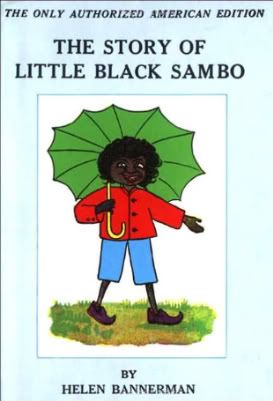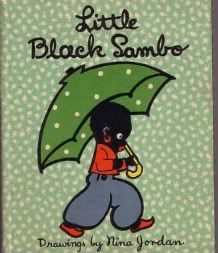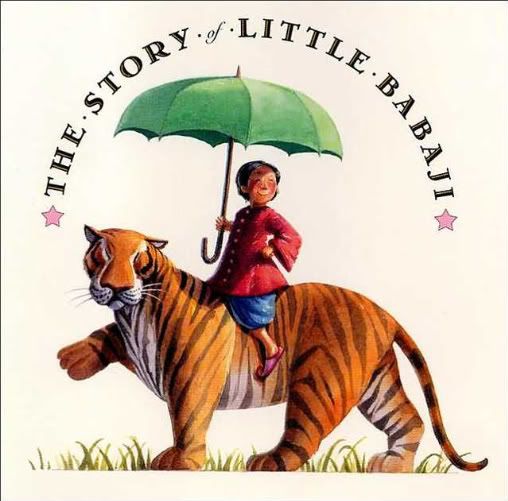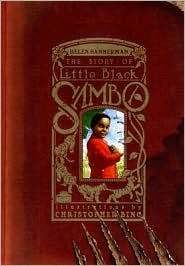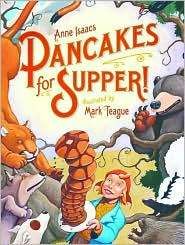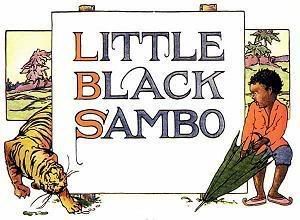Aline Pereira is an independent writer, editor and editorial consultant specializing in multicultural children’s books and was Managing Editor of PaperTigers from 2004 until January 2011. In honor of PaperTigers’ 10th anniversary Aline wrote an article entitled Celebrating PaperTigers 10th Anniversary: What a Smilestone! which you can read here, and now offers up her Top 10 Tiger Themed Books.
One tiger, two tigers… ten tigers! More tigers! by Aline Pereira
Children love to ask each other about their favorite animals, and their answers usually reveal much about themselves: what they fear, what they love, and what they need and want from the world.
In celebration of PaperTigers’ 10th anniversary, I put together a list of ten (plus one to grow on) multicultural books featuring tigers, a graceful, alluring and majestic animal– often mentioned as a “favorite” of children–which is a symbol of all that is splendid and powerful in nature. I thought PaperTigers’ 10th’ anniversary would be a good occasion to celebrate tigers and remind children and adults that, without the proper protective measures, tigers in the wild may disappear by 2022–within a decade!–the next Year of the Tiger.
Tigers are an important part of the reality and mythology of many countries, including Bangladesh, China, India, Korea and Thailand. Throughout history, tigers have been regarded as auspicious animals, as guardians and protectors. Indian mythology, for instance, has several stories where the tiger is believed to have powers to do everything from fighting dragons to creating rain to keeping children safe from nightmares. According to a 2010 statement by the Global Tiger Initiative, “The loss of tigers and degradation of their ecosystems would inevitably result in a historic, cultural, spiritual, and environmental catastrophe for the tiger-range countries [Bangladesh, Bhutan, Cambodia, China, India, Indonesia, Laos, Malaysia, Myanmar, Nepal, Thailand, Vietnam and Russia].”
It’s my hope that this book list will help children learn more about tigers and the ways in which they feature, literally and metaphorically, in stories from far and near.
The tigers are ROARING!… Can you hear them?
Ying Chang Compestine, illustrated by Yan Nascimbene
Crouching Tiger
Candlewick, 2011
Age: 6+In Crouching Tiger, an American boy learns to appreciate his Chinese heritage with the help of his grandfather, who is visiting from China.
Little Vinson is intrigued by grandpa’s Tai Chi routine: “He crouched like a tiger; he drew an invisible bow; he lifted a foot like a rooster and stood still,” but when grandpa tries to teach him how to do it, he thinks tai chi isn’t as interesting as kung fu, which he already knows. When grandpa calls him by his Chinese name, which happens all the time, Vinson finds it annoying, but little by little, he begins to understand and feel pride in his heritage.
Nascimbene’s gorgeous illustrations capture the excitement of the parade and convey the boy’s emotional shift from annoyance to curiosity to pride very well. An author’s note at the end adds depth to the story by explaining Chinese martial arts and Chinese New Year traditions.
James Rumford,
Tiger and Turtle
Roaring Brook Press/ A Neal Porter Book, 2010
Age: 4 – 8A 2011 Bank Street Best Children’s Book of the Year, Tiger and Turtle is the retelling of an Afghani folktale.
Tiger and Turtle are not friends but have learned to live peacefully (“A tiger’s claws could not harm a turtle’s shell any more than a turtle’s feet could outrun a tiger’s.”). However, when a beautiful flower floats down from the sky and lands by their feet, the two animals start arguing about who should have it, who saw it first, and so on, and end up getting into a terrible fight… And it’s not until they accidently fall into a flower-covered field that they realize their foolishness and learn to be friends.
An author’s note explains how he discovered the folktale and talks about the cultural inspirations for the beautiful background patterns used throughout the book. Tiger and Turtle conveys an important message and makes for a perfect read-aloud for the younger crowd.
Eve Bunting, illustrated by David Frampton
Riding the Tiger
Clarion Books, 2001
Age: 9+Set in the streets of a big city and illustrated with gorgeous woodcuts by David Frampton, Riding the Tiger is Eve Bunting’s powerful story about a ten year-old boy new to town who can’t resist the invitation of an alluring tiger to go for a ride. Cruising the city on the tiger’s back gives Danny a sense power, of being respected by children and adults alike—he no longer feels powerless and out of place. Soon, however, he realizes that what he thought was respect is actually fear, and that getting off the tiger’s back isn’t easy.
A wonderful metaphor for the power of gangs, drugs (or whatever harmful attraction children may find hard to resist at one point or another in their lives), this beautifully told story offers much food for thought. It should be a must-read in schools everywhere, where children may be feeling tempted to give up their freedom and inner strength in the name of acceptance and (pseudo) respect.
Lynne Reid Banks,
Tiger, Tiger
Laurel Leaf, 2007
Age: 12+Two tiger brothers are taken from the jungle to Rome. One, Brute, is raised to kill slaves, criminals and Christians at the Colosseum; Boots, the other, becomes a pet to Emperor Julius Ceasar’s 12 year-old daughter, Aurelia.
While Boots is treated like royalty, Brute spends most of his time locked in a dark cage. When after a game gone wrong Julius, the slave who cares for Boots and harbor feelings for Aurelia, is sent to the arena to face the killer Brute, accused of letting Boots escape, things get very intense, and Aurelia must make difficult decisions whose consequences are beyond her years to fully grasp. The great mixture of adventure, romance and historical fiction in Tiger, Tiger will appeal to older kids and have them on the edge of their seats, rooting for a happy ending for Julius, Aurelia and Boots.
Helen Bannerman, illustrated by Valeria Petroni
The Boy and the Tigers
Golden Books, 2004
Age: 4+In this retelling of Helen Bannerman’s controversial Little Black Sambo, little Rajani ventures into the jungle and runs into several tigers who, one by one, convince him to give them his belongings: a new red coat, a pair of blue trousers, purple shoes, and even his green umbrella! But resourceful Rajani devises a way to outsmart the tigers and get his things back. The lovely new illustrations by Valeria Petroni combined with non-offensive names and non-stereotypical character depictions make this story a treasure again.
Elizabeth Stanley
Tyger! Tyger!
Enchanted Lion Books, 2007
Age: 8+Elizabeth Stanley’s Tyger! Tyger! is based on the true story of a sanctuary for endangered Indo-Chinese tigers in northwest Thailand.
For centuries Buddhist monks in their jungle monastery lived in harmony with neighboring animals, so when poachers begin killing the tigers, the monks protect these beautiful animals, beginning with two tiny cubs found hiding near the temple gate. Over time, more tigers are brought to or show up at the monastery. But poaching continues… One young monk’s vision offers a solution: a moat can be dug around the temple, creating a large island hermitage for the tigers. It is a formidable mission. “The moat must be deep, impassable. The monks’ tools were primitive and many of the men were old and weak. Only a miracle could create such a sanctuary.”
The monks in the story accomplish their goal, and see the moat filled during the next monsoon…[This is an excerpt from Charlotte’s review.]
Laura Manivong,
Escaping the Tiger
HarperCollins, 2010
Age: 12+Twelve year-old Vonlai must try to escape communist Laos with his sister and desperate parents by crossing the Mekong River, “where soldiers shoot at anything that moves.” Their only hope is Na Pho, a refugee camp in Thailand, on the other side of the river.
When they finally get there, after a dangerous journey, life in Na Pho feels far from safe–their living quarters is cramped, dirty, and the guards who keep watch on them are all unfriendly. Vonlai tries to carry on as best as he can, eating his meager portion of rationed food, attending a makeshift school, and playing with other kids to pass the time. But things take a turn for the worse when someone inside the camp threatens his family and Vonlai must call on a forbidden skill to protect them until they can be resettled, hopefully in a safer place.
This powerful novel about escaping communist Laos in 1982 is based on the author’s husband’s experience as a child. Focusing on a chapter of history not often seen in children’s literature, Escaping the Tiger offers a realistic portrayal of the plight of Laotians who fled the country to escape the communist regime. It shows the plight of refugees living in limbo, as well as the resilience of the human spirit in the face of difficult situations.
Anushka Ravishankar,
Tiger on a Tree
Farrar, Straus and Giroux, 2004 (originally published in India by Tara Books, in 1997)
Age: 4-8The tiger in Anushka Ravishankar’s whimsical picture book means no harm. But his wanderings lead to a run-in with an angry goat, so he takes refuge in a tree. There, he is cornered by a group of excitable men who are quickly confounded by what to do. (“Send him to the zoo? Stick him up with glue? Paint him electric blue?”) Their solution brings this comical story rich with word and sound-play full circle, and will leave many young listeners requesting repeated readings.
The superb design of this singular book features dynamic text layout integrated into the striking two-color prints in black and orange created by Pulak Biswas. Even with stylized printmaking techniques, the illustrator has managed to create a cast of visually distinctive characters whose expressions (the tiger’s included) are a wonderful complement to the text. [This is an excerpt from the CCBC review.]
Sy Montgomery, photographs by Eleanor Briggs
The Man-eating Tigers of Sundarbans
Houghton Mifflin Books for Children, 2001
Age: 8+The Sundarbans Tiger Reserve, situated in the Indian state of West Bengal, is home to more tigers than anywhere else on earth. There are said to be some five hundred tigers there—more than anywhere else in the world. Nowhere else do tigers live in a mangrove swamp. And nowhere else do healthy tigers routinely hunt people. No one knows why. The Man-Eating Tigers of Sundarbans is a mystery story, but it is also a story about science and myth, about people and tigers, and about different ways of seeing the natural world.
Sy Montgomery traveled to Sundarbans searching for answers to the mysteries surrounding these tigers. She listened to what scientists had to say about the unusual tiger behavior and to the stories of the villagers who revere the very animals who hunt them because they believe the tigers protect the forest they all depend on. Tradition has it that Daskin Ray, the tiger god, and Bonobibi, the forest goddess, rule Sundarbans. Every February there is a festival to celebrate their protection of the forest, and the reserve holds many rustic tiger shrines. As Montgomery argues, “Sometimes what is true is hidden, as in a riddle. Even dangerous man-eating tigers may do us more good than harm.”
This fascinating book includes beautiful photographs by Eleanor Briggs, fast facts, a glossary of Bengali phrases, and a list of organizations doing work to protect tigers.
Alison Lloyd,
The Year of the Tiger
Holiday House, 2010
Age: 10+In ancient China, the Great Wall is crumbling on the edge of the Han Empire. In the wall’s shadow, twelve-year-old Hu is starving. On the other side of the wall, China’s enemies are gathering strength. When an imperial battalion comes to town, Hu meets Ren, the son of the commander, and the two boys combine forces to train secretly for an archery tournament. For Hu, the contest offers escape from poverty and for Ren, the respect of his father. But the capture of a barbarian spy changes everything. With their trust at its lowest point, Ren and Hu must work together to evade the barbarians and save the empire. This exciting adventure story came out in 2010, the Year of the Tiger.
Antonia Michaelis,
Tiger Moon
Amulet Books, 2008 (originally published in Germany, in 2006)
Age: 14+A princess in trouble, a thief with a heart of gold, and a sacred talking tiger with an unnatural fear of water are at the heart of this “story within a story” set in India in the early 1900s.
In order to better endure her condition, Raka, the young bride of a violent merchant, tells a servant boy the story of Farhad, a thief and unlikely hero who is sent by Krishna on a mission to retrieve a famous jewel in order to save a kidnapped princess from a demon king. Farhad is accompanied on his journey by his friend Nitish, a white tiger who helps and advises him along the way.
The story gives an excellent overview of Hindu religious beliefs and of the conflicts India faced at the time of British occupation. Due to some implied sexual content, this novel is more suitable for young adults.
Anton Poitier,
Once I Was a Comic… But Now I’m A Book about Tigers!
Hammond, 2010
Age: 4+With this fantastic earth-friendly book, kids get two unforgettable stories at the same time—one about tigers and one about recycling! Fun facts, quirky illustrations, and cute photographs give kids a close-up look at the tiger, one of the world’s most beloved endangered species. Kids will learn everything from how tigers hunt and how long their tails are to where they live and what they eat in this exciting, informative, and earth-friendly book.
A side panel on each page tells the story of how this book was made from the recycled paper of a comic book, teaching kids the process of recycling and showing them what they can do to help save the planet—and the tigers!















